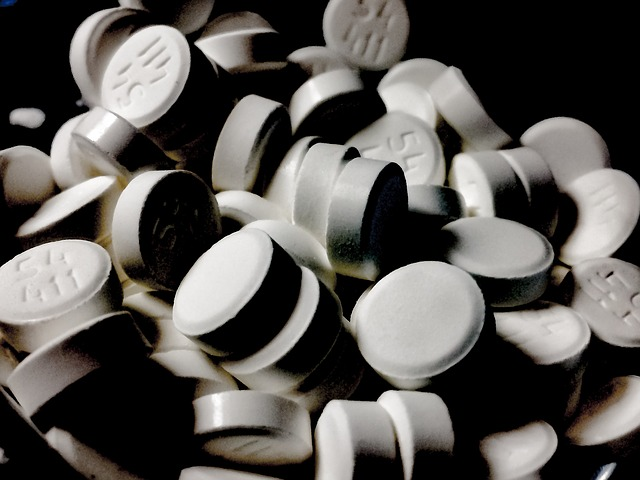Opioids
Opioids are drugs that target the opioid receptors on nerve cells in the body and brain. They are typically used for pain relief, but are often misused and is one of the leading causes of drug related deaths today.

Chronic pain and severe pain
Opioids bind to protein receptors in the brains, spinal cords, gut and other areas of the body. Typically, opioid drugs block messages sent through nerves into brain cells and are an effective way to prevent severe pain or help with pain control. It tells the brain it’s not hurting. They can also cause euphoric effects which is a major reason for using them in other non-medical ways.
History
Opioid use goes back 8000 years and has permeated cultures such as the Ancient Greeks, Romans, Chinese, and Egyptians. Opioids occur naturally in the opium poppy plant and can be harvested from the plant, but can also be created artificially in a laboratory, also known as synthetic opioids. It has been used in wars to help wounded soldiers with their pain. Over time, people have realized its potential for addiction and have instituted regulations to help control abuse.
Opioid addiction
While there are laws surrounding the prescription of opioid pain relievers, the introduction of OxyContin by Purdue Pharma as well as other opioids have increased significantly and quickly in recent years. Pharmaceutical companies heavily advertised their medications and downplayed their addictive qualities, causing doctors to over prescribe. Addiction and illegal opioids have led to a major increase in opioid overdoses. This caused the United States to officially declare the opioid crisis as a public health crisis in 2017.
How to get opioids
The most common way to get opioids is through your doctor. Your physician might write a prescription when you experience or are expected to experience chronic pain or acute pain, such as when you are recovering from a surgery. Insurance companies commonly cover these pain medications.
Opioids are also manufactured and sold illegally all over the world. They make their way into countries illegally through smuggling or even through the mail. Because there is a huge demand for opioids, they continue to be manufactured and distributed illegally despite the harm and dangers associated with them.
Forms of Opioids
Opioid medications can come in many forms. Pills and patches are the most common. Patches allows the medication to be absorbed into skin and the medication can be released over time. They can also be ingested via an oral solution or injected.
Opioids that serve as prescription pain relievers include drugs such as hydrocodone, oxycodone, oxymorphone, morphine, methadone, fentanyl, and codeine. Brands of these pain medications include Vicodin, OxyContin, Percocet, Opana, Kadian, and Avinza. Heroin is also an opioid derived from morphine, but is used for recreational purposes and is illegal.
Side Effects
Common side effects of opioids are
- Drowsiness
- Dizziness
- Nausea and vomiting
- Constipation
- Physical dependence
- Tolerance
The combination of dependence (withdrawal symptoms that occur when you stop taking opioids) and tolerance (the need to take a higher dose in order to achieve the same effect over time) contribute to the addictive qualities of opioids over an extended period of time. Often, euphoria is experienced by people taking opioids, which also makes them highly addictive.
Long term side effects include
- Chronic constipation
- Sleep-disordered breathing (SDB)
- Increased risk of bone fractures.
- Hypothalamic-pituitary-adrenal dysregulation.
- Increased risk of overdose.
Opioid Overdose
When enough opioids are taken, they can harm the human body. Overdoses may be nonfatal but can also result in drug overdose deaths, such as when your breathing slows and eventually stops. Opioids that are taken differently than prescribed or are mixed with other drugs or alcohol can cause an opioid overdose. An overdose may happen with any opioid and at any time.
Especially when an opioid is obtained illegally, the person taking the opioid may not know exactly what is in the drug. They may be taking an opioid that contains ten times their normal dose or an opioid that their body has never seen before or is much more potent. This kind of scenario litters headlines across the world.
What to do when someone overdoses
Call emergency services and get help immediately. The more quickly you get help, the more likely their life can be saved.
Naloxone (also known as Narcan) is a drug that can prevent opioid overdose deaths if given to the person immediately. However, medical attention should still be administered even after naloxone is used.
Withdrawal Symptoms
If taken properly, opioids will likely not cause withdrawal symptoms or negative consequences. However, if opioids are misused by taking more than prescribed or to achieve a “high”, then stopping the use of an opioid may trigger withdrawal symptoms.
Symptoms can vary from person to person and can be experienced to varying degrees. Symptoms may include:
- Runny nose
- Excessive tears in your eyes/watery eyes
- Yawning
- Hyperventilation
- Abnormally high body temperature
- Muscle aches
- Vomiting
- Diarrhea
- Anxiety
Getting help
If you are or think you are experiencing an addiction or dependence on an opioid, you are not alone. Thousands of people are struggling in the same way. You can get help – start by talking with someone you trust, whether that is a family member, friend, or health care provider. They can help support you in your journey when things get tough. Find an addiction specialist or treatment center near you with experts that can guide you through your battle. It will feel impossible at first, but it is possible to win over any addiction.